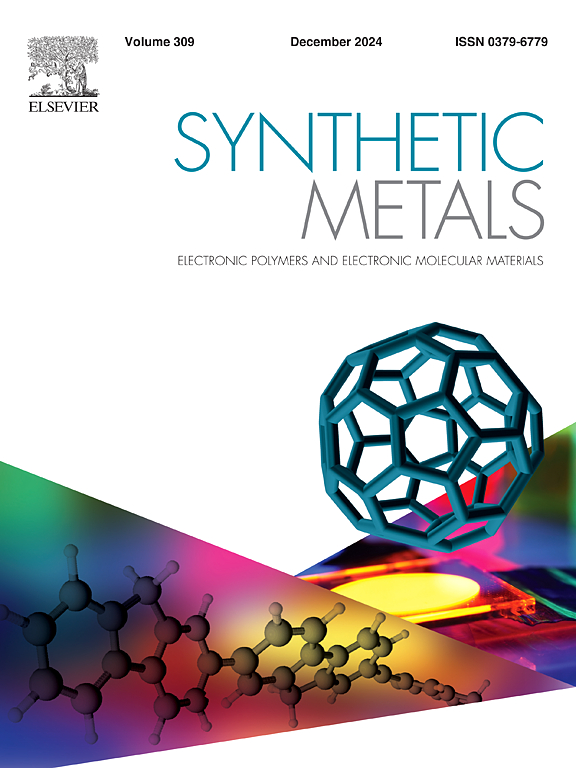Modern advancement of perylene diimide metal complex: Exposition the coordination modes and applications
IF 4
3区 材料科学
Q2 MATERIALS SCIENCE, MULTIDISCIPLINARY
引用次数: 0
Abstract
Perylene diimide (PDI) complexes are highly promising for use in a wide range of rapidly developing fields in the fields of organic electronics, single-compound spectroscopy, supramolecular photochemistry, host-guest chemistry, chemical sensing, gas storage, heterogeneous catalysis, surface-templating, molecular recognition, artificial photosynthetic systems, light-harvesting, solar cells, light emitting diode, field effect transistor, optical sensing, and electron transporting semiconductors in field effect transistor. This is because PDI metal complexes possess high electron mobility, stable radical anions, acting as a building block electron donor, having rich and extended absorption characteristics and possessing highly exothermic electron affinity. They also are electron acceptors and also electron donors, photo stable and can be used in light emitting diodes and photovoltaic cells. The creation of morphologically required functional products presents an intriguing challenge for conventional organic methodology, as the synthetic strategy of PDI complexes relies on coordination noncovalent bonds. Because of this, the mediated metal (transition) synthetic method has received a lot of attention in the past few decades. This has made a variety of supramolecular designs possible, such as three-dimensional cages, linear polymers, molecular cylinders, and planar grids. This review highlights the synthesis and wide range of applications of perylene diimide (PDI) complexes while offering a thorough overview of them. PDI-metal complexes are useful in many scientific fields because of their distinct chemical and electronic properties. Important synthetic routes are highlighted in the review, along with techniques and tactics for intricate fabrication. It investigates design ideas and chemical alterations to customize PDI complexes for various uses. In summary, the present review highlights the diverse properties of PDI-metal complexes and highlights their importance in promoting both scientific research and technological advancement.
苝二亚胺金属配合物的现代进展:阐述配合方式及其应用
苝酰二亚胺(PDI)配合物在有机电子学、单化合物光谱学、超分子光化学、主-客化学、化学传感、气体储存、异相催化、表面模板、分子识别、人工光合系统、光收集、太阳能电池、发光二极管、场效应晶体管、光学传感、场效应晶体管中的电子输运半导体。这是因为PDI金属配合物具有高的电子迁移率,稳定的自由基阴离子,作为构建块电子给体,具有丰富而扩展的吸收特性,具有高度的放热电子亲和性。它们也是电子受体和电子供体,光稳定,可用于发光二极管和光伏电池。由于PDI配合物的合成策略依赖于配位非共价键,因此创建形态学要求的功能产物对传统的有机方法提出了一个有趣的挑战。因此,在过去的几十年中,介导金属(过渡)合成方法受到了广泛的关注。这使得各种超分子设计成为可能,例如三维笼,线性聚合物,分子圆柱体和平面网格。本文综述了苝酰二亚胺(PDI)配合物的合成及其广泛的应用。pdi -金属配合物由于其独特的化学和电子性质,在许多科学领域都很有用。综述了重要的合成路线,以及复杂的制造技术和策略。它研究了设计思想和化学变化,以定制各种用途的PDI配合物。综上所述,本文综述了pdi -金属配合物的多种性质及其在促进科学研究和技术进步方面的重要性。
本文章由计算机程序翻译,如有差异,请以英文原文为准。
求助全文
约1分钟内获得全文
求助全文
来源期刊

Synthetic Metals
工程技术-材料科学:综合
CiteScore
8.30
自引率
4.50%
发文量
189
审稿时长
33 days
期刊介绍:
This journal is an international medium for the rapid publication of original research papers, short communications and subject reviews dealing with research on and applications of electronic polymers and electronic molecular materials including novel carbon architectures. These functional materials have the properties of metals, semiconductors or magnets and are distinguishable from elemental and alloy/binary metals, semiconductors and magnets.
 求助内容:
求助内容: 应助结果提醒方式:
应助结果提醒方式:


